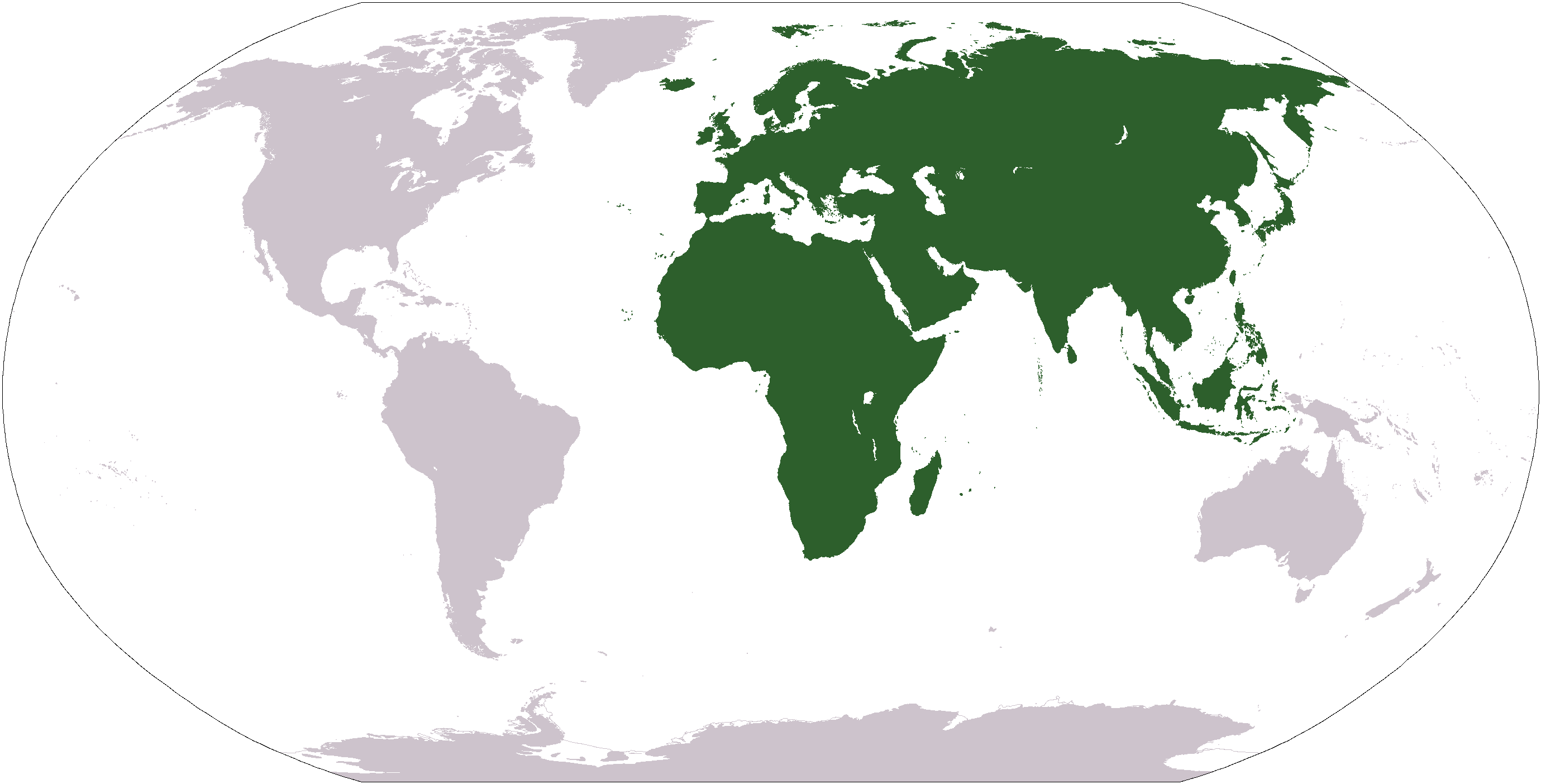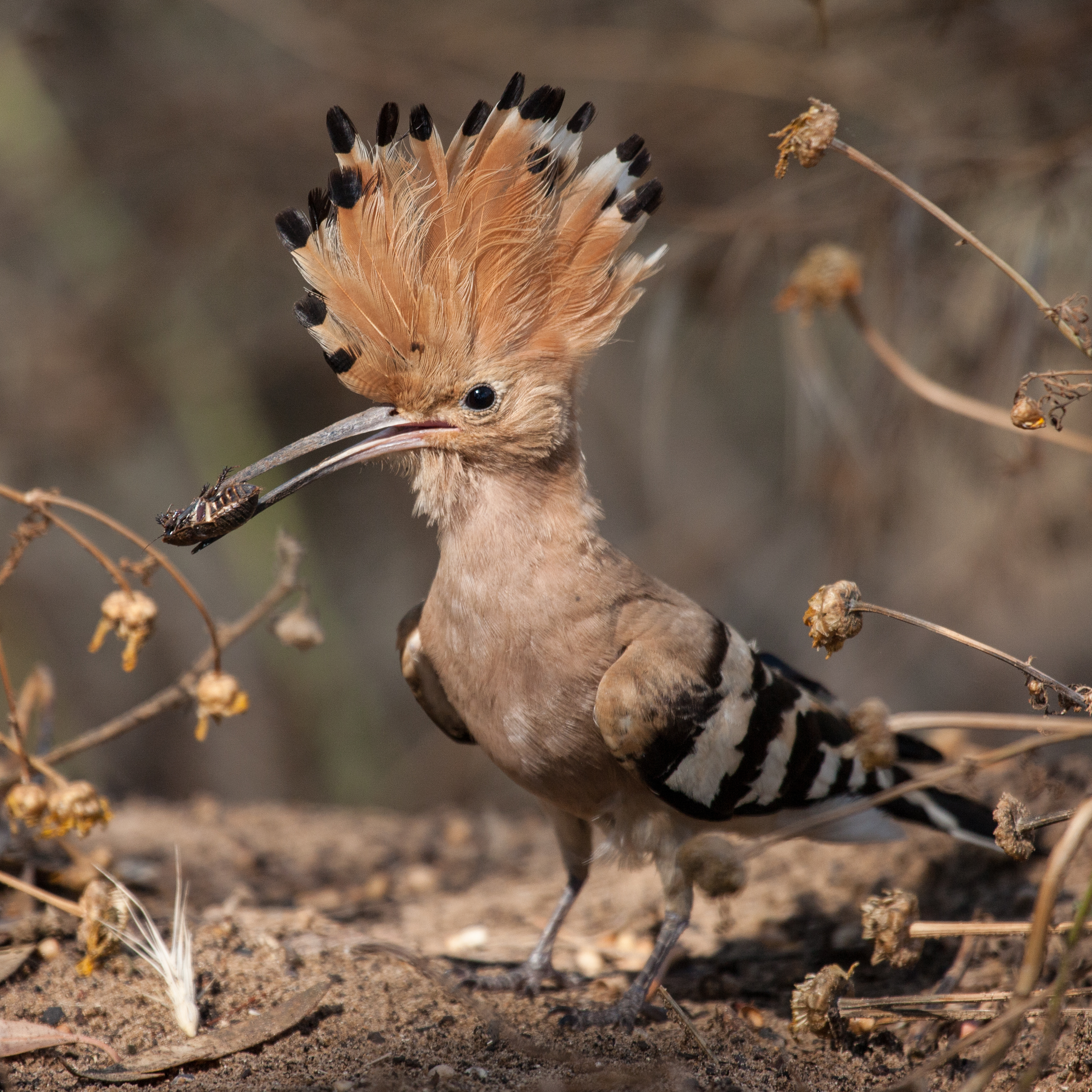|
Coraciiformes
The Coraciiformes are a group of usually colourful birds including the kingfishers, the bee-eaters, the rollers, the motmots, and the todies. They generally have syndactyly, with three forward-pointing toes (and toes 3 & 4 fused at their base), though in many kingfishers one of these is missing. The members of this order are linked by their "slamming" behaviour, thrashing their prey onto surfaces to disarm or incapacitate them. In the past, Coraciiformes encompassed all anisodactyl (including syndactyl) members of the Cavitaves. This means that the birds currently classified in Leptosomiformes ( cuckoo-roller) and Bucerotiformes ( hornbills, hoopoes and allies) were formerly classified in Coraciiformes. This is largely an Old World order, with the representation in the New World limited to the dozen or so species of todies and motmots, and a mere handful of the more than a hundred species of kingfishers. The name Coraciiformes means " raven-like". Specifically, i ... [...More Info...] [...Related Items...] OR: [Wikipedia] [Google] [Baidu] |
Hornbill
Hornbills are birds found in tropical and subtropical Africa, Asia and Melanesia of the family Bucerotidae. They are characterized by a long, down-curved bill which is frequently brightly coloured and sometimes has a horny casque on the upper mandible. Hornbills have a two-lobed kidney. They are the only birds in which the first and second neck vertebrae (the atlas and axis respectively) are fused together; this probably provides a more stable platform for carrying the bill. The family is omnivorous, feeding on fruit and small animals. They are monogamous breeders nesting in natural cavities in trees and sometimes cliffs. A number of mainly insular species of hornbill with small ranges are threatened with extinction, mainly in Southeast Asia. In the Neotropical realm, toucans occupy the hornbills' ecological niche, an example of convergent evolution. Despite their close appearances, the two groups are not very closely related, with toucans being allied with the woodpeckers, ... [...More Info...] [...Related Items...] OR: [Wikipedia] [Google] [Baidu] |
Middle Eocene
The Eocene ( ) is a geological epoch that lasted from about 56 to 33.9 million years ago (Ma). It is the second epoch of the Paleogene Period in the modern Cenozoic Era. The name ''Eocene'' comes from the Ancient Greek (''Ēṓs'', ' Dawn') and (''kainós'', "new") and refers to the "dawn" of modern ('new') fauna that appeared during the epoch.See: *Letter from William Whewell to Charles Lyell dated 31 January 1831 in: * From p. 55: "The period next antecedent we shall call Eocene, from ήως, aurora, and χαινος, recens, because the extremely small proportion of living species contained in these strata, indicates what may be considered the first commencement, or ''dawn'', of the existing state of the animate creation." The Eocene spans the time from the end of the Paleocene Epoch to the beginning of the Oligocene Epoch. The start of the Eocene is marked by a brief period in which the concentration of the carbon isotope 13C in the atmosphere was exceptionally low in ... [...More Info...] [...Related Items...] OR: [Wikipedia] [Google] [Baidu] |
Cavitaves
Cavitaves is a clade that contains the order Leptosomiformes (cuckoo roller) and the clade Eucavitaves (a large assemblage of birds that includes woodpeckers, kingfishers and trogons).Naish, D. (2012). "Birds." Pp. 379–423 in Brett-Surman, M.K., Holtz, T.R., and Farlow, J. O. (eds.), ''The Complete Dinosaur (Second Edition)''. Indiana University Press (Bloomington & Indianapolis). This group was defined in the ''PhyloCode The ''International Code of Phylogenetic Nomenclature'', known as the ''PhyloCode'' for short, is a formal set of rules governing phylogenetic nomenclature. Its current version is specifically designed to regulate the naming of clades, leaving the ...'' by George Sangster and colleagues in 2022 as "the least inclusive crown clade containing '' Leptosomus discolor'' and '' Picus viridis''". The name refers to the fact that the majority of them nest in cavities. References Neognathae {{bird-stub ... [...More Info...] [...Related Items...] OR: [Wikipedia] [Google] [Baidu] |
Pamela C
Pamela commonly refers to: * '' Pamela; or, Virtue Rewarded'', a novel written by Samuel Richardson in 1740 * Pamela (name), a given name and, rarely, a surname. Pamela may also refer to: Arts, entertainment, and media Music * Pamela Spence, a Turkish pop-rock singer, known by her stage name "Pamela" *"Pamela Pamela", a song recorded by Wayne Fontana that reached number 11 in the UK Singles Chart in 1967 * "Pamela" (song), a 1988 hit song for the band Toto *"Pamella", a song by Remmy Ongala from the album ''Songs for the Poor Man'' *"Pamela Wan", a song composed by Vhong Navarro in 2004, inspired by the movie ''Otso-Otso Pamela-Mela-Wan'' Other entertainment and media * ''Pamela'' (film), a 1945 French film *'' Pamela, A Love Story'', an upcoming 2023 Netflix documentary about Pamela Anderson *'' Una donna da guardare'', a 1990 Italian erotic movie *'' P.A.M.E.L.A.'', a first-person survival video game Other * MSC ''Pamela'', a container ship launched in 2005 * ''Pamela'' (b ... [...More Info...] [...Related Items...] OR: [Wikipedia] [Google] [Baidu] |
Frank Gill (ornithologist)
Frank Bennington Gill (born October 2, 1941 in New York City) is an American ornithologist with worldwide research interests and birding experience. He is perhaps best known as the author of the textbook ''Ornithology'' (4th edition, 2019), the leading textbook in the field. Gill was raised in Teaneck, New Jersey. He reported that he became interested in birds at the age of seven, when his grandfather, Frank Rockingham Downing, showed him a song sparrow at a birdbath. This was the first time he had seen a bird through binoculars, "and I was hooked." After Gill received his PhD in zoology from the University of Michigan in 1969 (where he had also completed his undergraduate degree), he joined the ornithology department at the Academy of Natural Sciences in Philadelphia. From 1969 to 1995, Gill was a full-time staff member of the academy, where he held various positions throughout his tenure, including that of chairman for the Department of Ornithology and vice president fo ... [...More Info...] [...Related Items...] OR: [Wikipedia] [Google] [Baidu] |
Richard Prum
Richard O. Prum (born 1961) is an evolutionary biologist and ornithologist. He is the William Robertson Coe Professor of Ornithology, Ecology and Evolutionary Biology at Yale University, as well as the head curator of vertebrate zoology at the university's Peabody Museum of Natural History. His 2017 book '' The Evolution of Beauty: How Darwin’s Forgotten Theory of Mate Choice Shapes the Animal World—and Us'' was named one of the 10 Best Books of 2017 by The New York Times and was a finalist for the 2018 Pulitzer Prize in General Nonfiction. Life and work Prum describes himself as "an evolutionary ornithologist with broad interests in diverse topics, including phylogenetics, behavior, feathers, structural coloration, evolution and development, sexual selection, and historical biogeography." Prum grew up in rural Vermont. He received his bachelor's degree at Harvard University in 1983 and completed his doctorate at the University of Michigan at Ann Arbor in 1989. He th ... [...More Info...] [...Related Items...] OR: [Wikipedia] [Google] [Baidu] |
Latin Language
Latin ( or ) is a classical language belonging to the Italic languages, Italic branch of the Indo-European languages. Latin was originally spoken by the Latins (Italic tribe), Latins in Latium (now known as Lazio), the lower Tiber area around Rome, Italy. Through the expansion of the Roman Republic, it became the dominant language in the Italian Peninsula and subsequently throughout the Roman Empire. It has greatly influenced many languages, Latin influence in English, including English, having contributed List of Latin words with English derivatives, many words to the English lexicon, particularly after the Christianity in Anglo-Saxon England, Christianization of the Anglo-Saxons and the Norman Conquest. Latin Root (linguistics), roots appear frequently in the technical vocabulary used by fields such as theology, List of Latin and Greek words commonly used in systematic names, the sciences, List of medical roots, suffixes and prefixes, medicine, and List of Latin legal terms ... [...More Info...] [...Related Items...] OR: [Wikipedia] [Google] [Baidu] |
Raven
A raven is any of several large-bodied passerine bird species in the genus '' Corvus''. These species do not form a single taxonomic group within the genus. There is no consistent distinction between crows and ravens; the two names are assigned to different species chiefly by size. The largest raven species are the common raven and the thick-billed raven; these are also the largest passerine species. Etymology The term ''raven'' originally referred to the common raven (''Corvus corax''), the widespread species of the Northern Hemisphere. The modern English word ''raven'' has cognates in all other Germanic languages, including Old Norse (and subsequently modern Icelandic) and Old High German , all of which descend from Proto-Germanic . Collective nouns for a group of ravens include a "conspiracy", a "treachery", a "rave" and an "unkindness"; in practice, most people use the more generic "flock". Extant species * ''Corvus albicollis'' – White-necked raven (eastern and s ... [...More Info...] [...Related Items...] OR: [Wikipedia] [Google] [Baidu] |
New World
The term "New World" is used to describe the majority of lands of Earth's Western Hemisphere, particularly the Americas, and sometimes Oceania."America." ''The Oxford Companion to the English Language'' (). McArthur, Tom, ed., 1992. New York: Oxford University Press, p. 33: "[16c: from the feminine of ''Americus'', the Latinized first name of the explorer Amerigo Vespucci (1454–1512). The name ''America'' first appeared on a map in 1507 by the German cartographer Martin Waldseemüller, referring to the area now called Brazil]. Since the 16th century, the term "New World" has been used to describe the Western Hemisphere, often referred to as the Americas. Since the 18th century, it has come to represent the United States, which was initially colonial British America until it established independence following the American Revolutionary War. The second sense is now primary in English: ... However, the term is open to uncertainties: ..." The term arose in the early 16th ... [...More Info...] [...Related Items...] OR: [Wikipedia] [Google] [Baidu] |
Order (biology)
Order () is one of the eight major hierarchical taxonomic ranks in Linnaean taxonomy. It is classified between family and class. In biological classification, the order is a taxonomic rank used in the classification of organisms and recognized by the nomenclature codes. An immediately higher rank, superorder, is sometimes added directly above order, with suborder directly beneath order. An order can also be defined as a group of related families. What does and does not belong to each order is determined by a taxonomist, as is whether a particular order should be recognized at all. Often there is no exact agreement, with different taxonomists each taking a different position. There are no hard rules that a taxonomist needs to follow in describing or recognizing an order. Some taxa are accepted almost universally, while others are recognized only rarely. The name of an order is usually written with a capital letter. For some groups of organisms, their orders may follow consist ... [...More Info...] [...Related Items...] OR: [Wikipedia] [Google] [Baidu] |
Old World
The "Old World" () is a term for Afro-Eurasia coined by Europeans after 1493, when they became aware of the existence of the Americas. It is used to contrast the continents of Africa, Europe, and Asia in the Eastern Hemisphere, previously thought of by the Europeans as comprising the entire world, with the "New World", a term for the newly encountered lands of the Western Hemisphere, particularly the Americas. Etymology In the context of archaeology and world history, the term "Old World" includes those parts of the world which were in (indirect) cultural contact from the Bronze Age onwards, resulting in the parallel development of the early civilizations, mostly in the temperate zone between roughly the 45th and 25th parallels north, in the area of the Mediterranean, including North Africa. It also included Mesopotamia, the Persian plateau, the Indian subcontinent, China, and parts of Sub-Saharan Africa. These regions were connected via the Silk Road trade route, and ... [...More Info...] [...Related Items...] OR: [Wikipedia] [Google] [Baidu] |
Hoopoe
Hoopoes () are colourful birds found across Africa, Asia, and Europe, notable for their distinctive "Crest (feathers), crown" of feathers which can be raised or lowered at will. Two living and one extinct species are recognized, though for many years both extant species were lumped as a single species—''Upupa epops''. In fact, some taxonomists still consider the species to be Biological_specificity#Conspecific, conspecific. Some authorities also keep the African and Eurasian hoopoe together but split the Madagascar hoopoe. The Eurasian hoopoe is common in its range and has a large population, so it is evaluated as Least Concern on the IUCN Red List of Threatened Species. However, their numbers are declining in Western Europe. Conversely, the hoopoe has been increasing in numbers at the tip of the South Sinai, Sharm el-Sheikh. There are dozens of nesting pairs that remain resident all year round. Taxonomy The genus ''Upupa'' was introduced in 1758 by the Swedish naturalist Carl ... [...More Info...] [...Related Items...] OR: [Wikipedia] [Google] [Baidu] |







